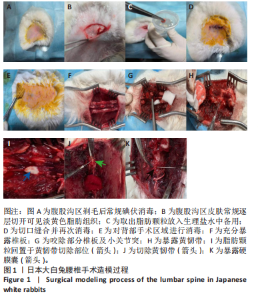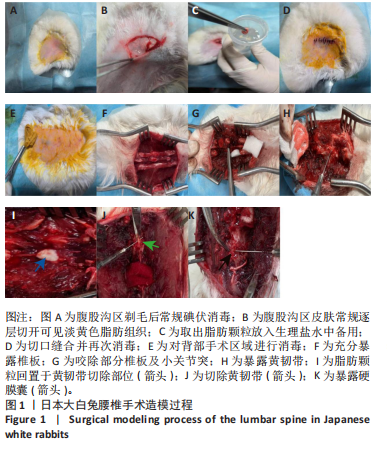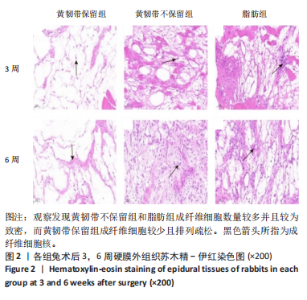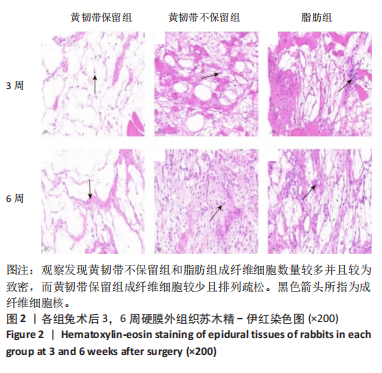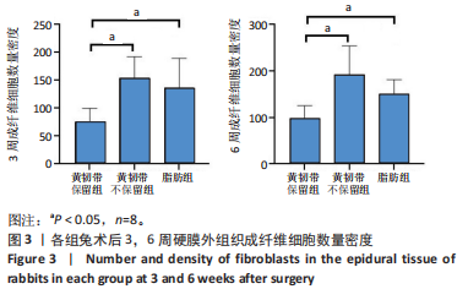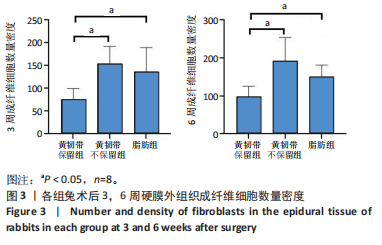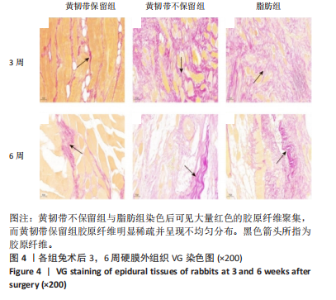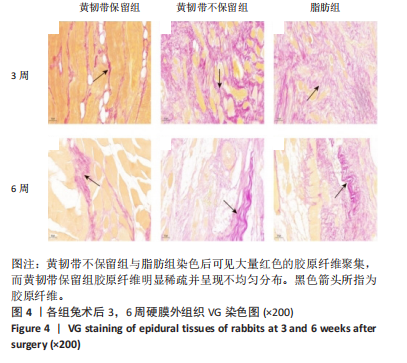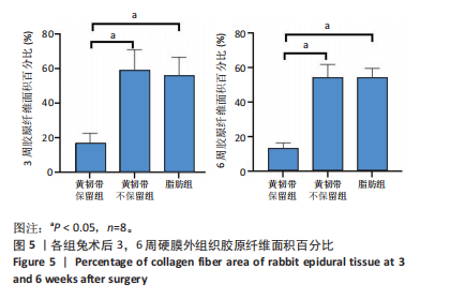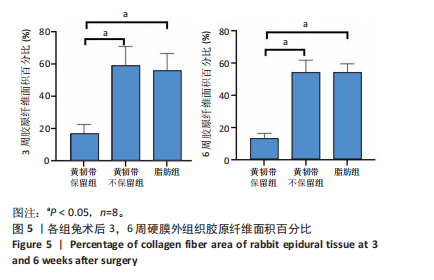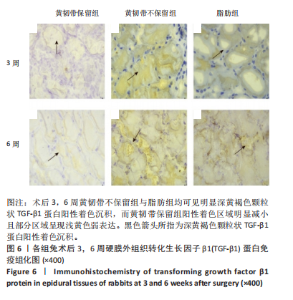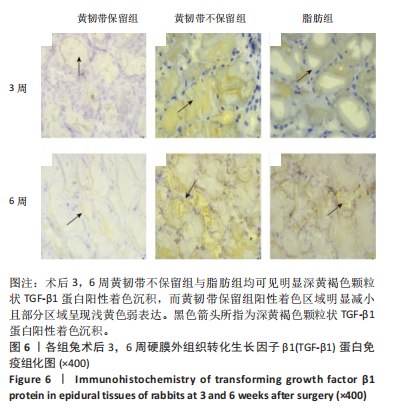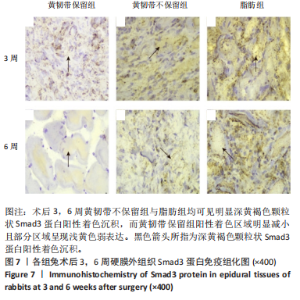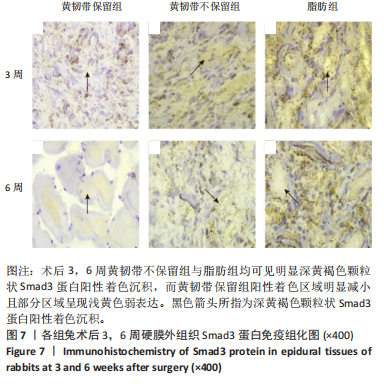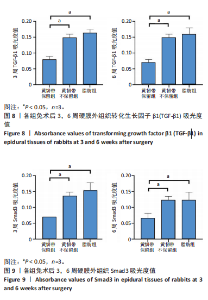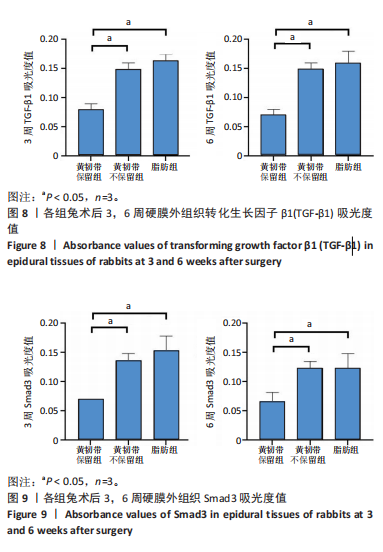[1] 姚新苗,周国庆.从“以筋为主”的视角认识现代脊柱康复医学[J].康复学报,2015,25(4):52-55+61.
[2] 孙凯,朱立国,魏戌,等.独活寄生汤加减联合手法治疗腰椎间盘突出症的系统评价与meta分析[J].海南医学院学报,2020,26(1): 34-41+46.
[3] 胡永胜,张晓璇,宋兴华,等.单纯减压术与减压内固定融合术治疗复发性腰椎间盘突出症的疗效比较[J].中国临床新医学,2023, 16(11):1175-1179.
[4] GAO Q, XU L, YANG Q, et al. MicroRNA-21 contributes to high glucose-induced fibrosis in peritoneal mesothelial cells in rat models by activation of the Ras-MAPK signaling pathway via Sprouty-1. J Cell Physiol. 2019; 234(5):5915-5925.
[5] 蔡原,邓呈亮.脂肪干细胞无细胞提取液的治疗用途:皮肤老化、创面愈合、瘢痕恢复乃至神经再生[J].中国组织工程研究, 2021,25(13):2097-2102.
[6] 王雨顺,郑鉴锐,罗玉鸿,等.巨噬细胞介导的骨免疫在股骨头坏死中的作用及其机制研究[J].中国修复重建外科杂志,2024, 38(1):119-124.
[7] LIU Z, CHEN H, FAN Z, et al. IFN-alpha-2b Inhibits the Proliferation and Migration of Fibroblasts via the TGFbeta/Smad Signaling Pathway to Reduce Postoperative Epidural Fibrosis. J Interferon Cytokine Res. 2021;41(8):271-282.
[8] 李述文,李瑞涵,贾雁,等.真实世界藤黄健骨片联合非甾体抗炎药治疗膝骨关节炎临床研究[J].中国实验方剂学杂志,2023,29(15): 110-118.
[9] 王云鹭,李锡勇,刘伦,等.前交叉韧带重建术后移植物愈合的研究进展[J].实用骨科杂志,2023,29(1):47-51.
[10] WANG K, LI XL, LIU J, et al. Using cross-linked hyaluronic acid gel to prevent postoperative lumbar epidural space adhesion: in vitro and in vivo studies. Eur Spine J. 2020;29(1):129-140.
[11] 刘湘君,方柏荣.重睑术后医源性上睑下垂修复研究进展[J].中国修复重建外科杂志,2023,37(6):732-735.
[12] 黄宗霖,朱丛笑,刘安娜,等.自体脂肪及其衍生物移植在瘢痕治疗中的应用进展[J].组织工程与重建外科,2022,18(3):272-276.
[13] KIM BS, MOON MS, YOON MG, et al. Prevalence of Diffuse Idiopathic Skeletal Hyperostosis Diagnosed by Whole Spine Computed Tomography: A Preliminary Study. Clin Orthop Surg. 2018;10(1):41-46.
[14] CONTE E, GILI E, FAGONE E, et al. Effect of pirfenidone on proliferation, TGF-beta-induced myofibroblast differentiation and fibrogenic activity of primary human lung fibroblasts. Eur J Pharm Sci. 2014;58:13-19.
[15] 程学良.可降解肽基组织黏合剂的制备及其在硬膜缺损中的应用探究[D].长春:吉林大学,2022.
[16] 李毓吉,唐能能.三维打印模型在腰椎间盘切除术后翻修手术中的应用[J].颈腰痛杂志,2022,43(1):29-32.
[17] 李一峰.两性离子聚合物涂覆多孔微球固定化脂肪酶的研究[D].天津:天津大学,2019.
[18] 曹燕琳,尹静波,颜世峰.生物可降解聚乳酸的改性及其应用研究进展[J].高分子通报,2006(10):90-97.
[19] 方源,康志杰,王海燕,等.骨组织工程中促血管支架应用的可视化分析[J].中国组织工程研究,2024,28(17):2708-2715.
[20] 杨梦琪,全雅琦,曾子瑜,等.3D打印的PU支架复合CA以及PRF促进软骨再生的研究[J].实用口腔医学杂志,2023,39(5):562-569.
[21] 徐海鹏,王丽雲,赵斌,等.压电生物材料在组织再生领域的研究与应用进展[J].生物医学工程学进展,2023,44(2):109-118.
[22] LI J, MA Q, WU J, et al. Dose preservation of ligament flavum really help prevent postoperative epidural fibrosis and improve outcome in microdiscectomy? J Clin Neurosci. 2020;80:331-335.
[23] 马旭,李文毅,高尚聚,等.后路经皮脊柱内镜下手术治疗神经根型颈椎病[J].临床骨科杂志,2023,26(6):761-764.
[24] 李莹,唐谨,吴从俊,等.椎间孔镜治疗椎间隙塌陷的腰椎间盘突出症预防出口神经根损伤的措施[J].生物骨科材料与临床研究, 2022,19(1):67-70.
[25] 王金昌,李振宙,曹峥,等.全内镜下腰椎椎体间融合术和可扩张通道下微创经椎间孔腰椎椎体间融合术的前瞻性对照研究[J].中国骨与关节杂志,2022,11(9):648-658.
[26] 孙立杰,郝丹丹.诱导肝星状细胞铁死亡治疗肝纤维化的研究进展[J].基础医学与临床,2024,44(1):108-113.
[27] 和梦静,赵长普,胡慧慧,等.TGF-β1/Smad信号通路在肝纤维化中的作用机制及中医药调控研究进展[J].中医学报,2024,39(1): 114-121.
[28] 文鑫华,汪青春.强直性脊柱炎临床分期探析[J].风湿病与关节炎, 2023,12(1):54-58.
[29] 罗磊,宁思思,杨绍政,等.电针对自发性高血压大鼠肾组织转化生长因子-β1及肾小管上皮间充质转化的影响[J].针刺研究,2023, 48(2):172-179.
[30] 刘沛昕,李兆峰,孙军辉,等.脊髓损伤治疗方式的研究进展[J].现代医药卫生,2023,39(10):1720-1726.
[31] 申杰,姚雪榕,刘越存,等.PDGFR-β/TGF-β/Smad2/3信号通路调控阿尔茨海默病血脑屏障完整性和学习记忆能力的分子机制研究[J].神经损伤与功能重建,2024,19(1):1-7.
[32] Lodyga M, Hinz B. TGF-beta1-A truly transforming growth factor in fibrosis and immunity. Semin Cell Dev Biol. 2020;101:123-139.
[33] Fu J, Wu B, Zhong S, et al. miR-29a-3p suppresses hepatic fibrosis pathogenesis by modulating hepatic stellate cell proliferation via targeting PIK3R3 gene expression. Biochem Biophys Res Commun. 2020;529(4):922-929.
[34] 周语平,杨成林.理肺化纤方对肺纤维化大鼠的防治作用及对TGF-β_1/Smad3信号转导通路的影响[J].中国实验方剂学杂志, 2011,17(12):151-155. |
